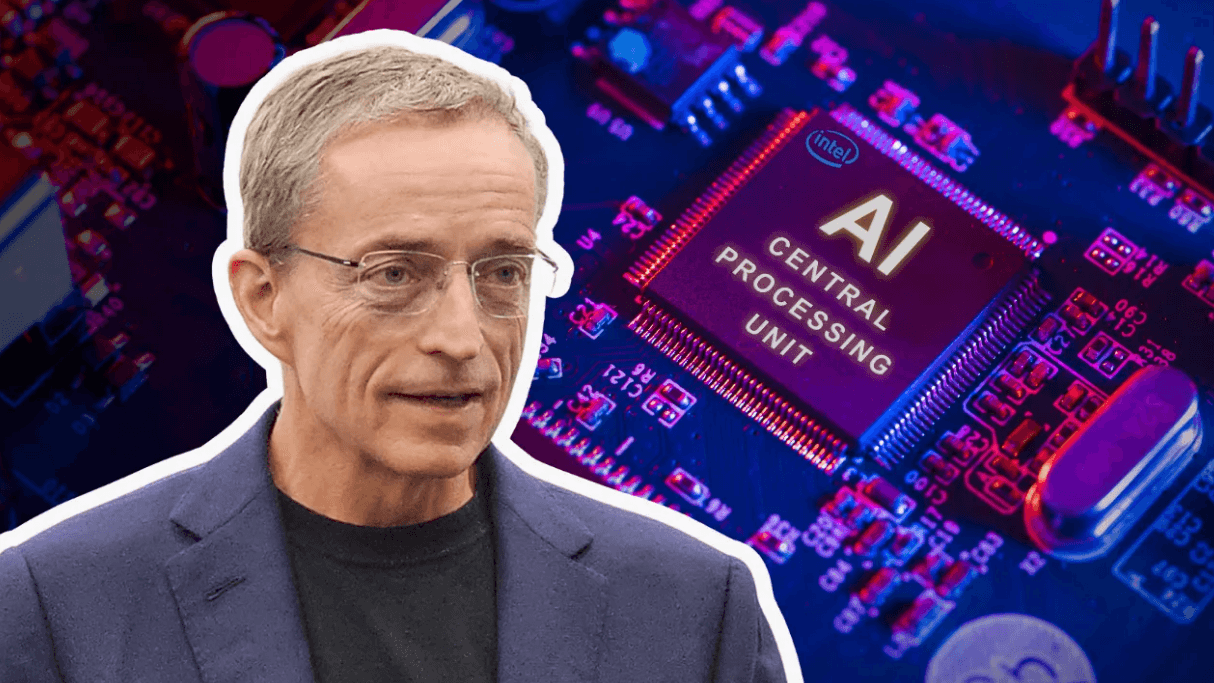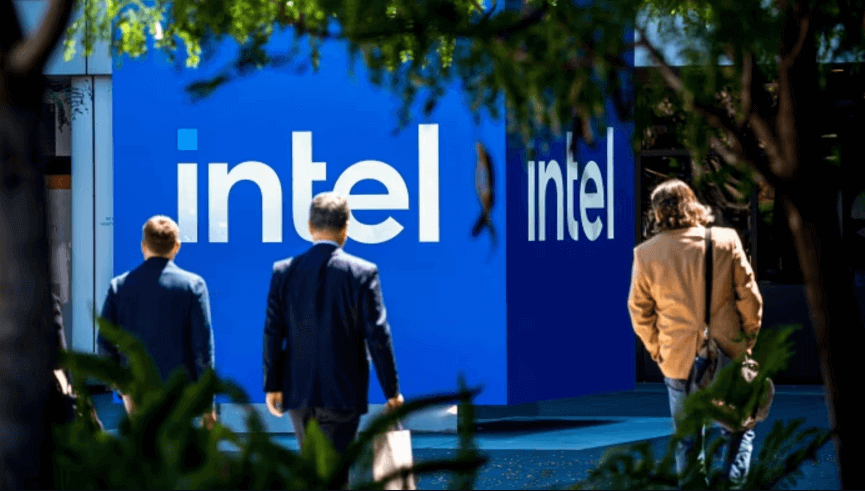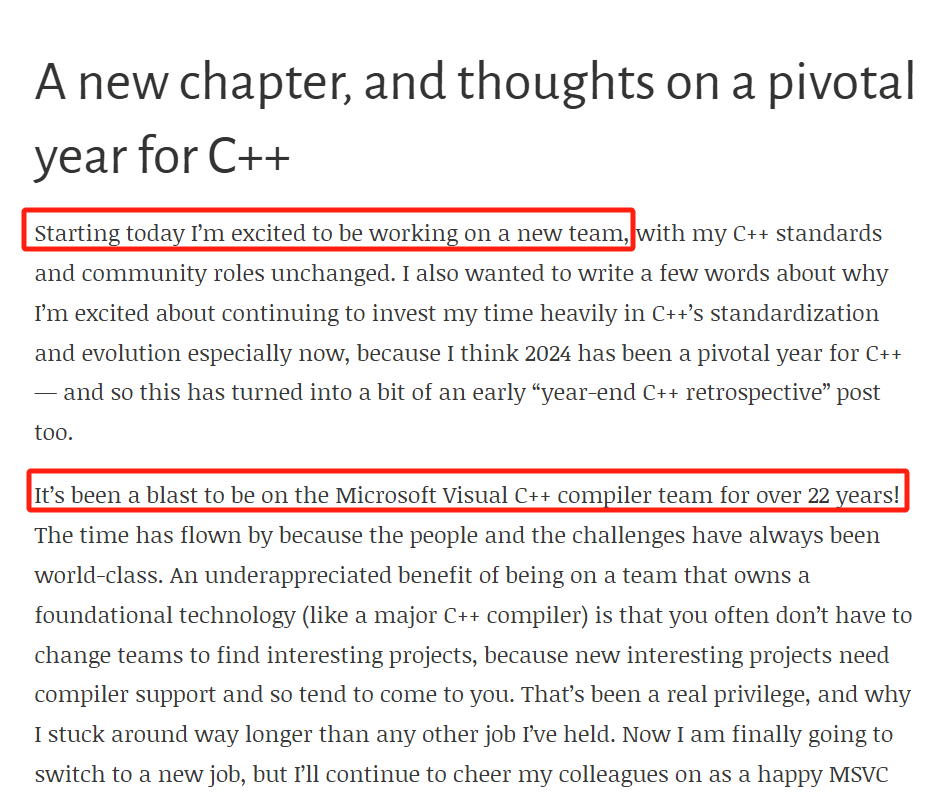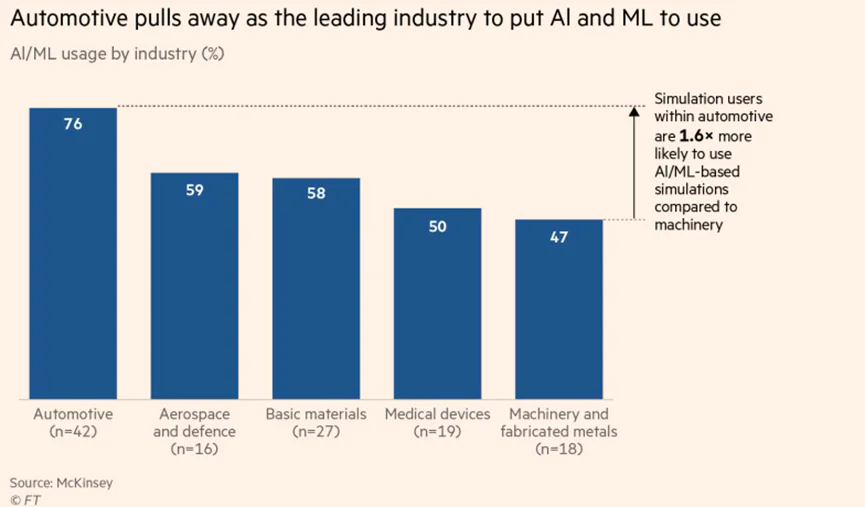Over the past 20 years, Intel has found itself on the opposite side of nearly every key technological trend. In 2021, Pat Gelsinger became Intel’s eighth CEO. His first goal after taking office was to make Intel a leader in every business area it competes in.
Three years later, not only has the expected leadership failed to materialize, but with AMD capturing the personal computer and server markets, and the industry shifting focus from CPUs to GPUs, which are more suited for AI computing, Intel's market space has faced unprecedented pressure. Compared to three years ago, Intel's revenue has dropped by more than 30%, its cash flow has turned negative, and its debt exceeds $50 billion.As of 2024, Intel’s stock price has halved. Its current market capitalization stands at $91.25 billion, only about 12% of Broadcom’s, 10.5% of TSMC’s, and 3.3% of NVIDIA’s.

In September, Gelsinger issued a company-wide letter to launch the largest transformation in the company’s history to save itself. He had already announced a layoff of 15,000 employees and a $10 billion cost reduction. This time, he made a more drastic move: spinning off the foundry business into an independent subsidiary, establishing independent directors, allowing external investments, and creating a clearer separation and independence from Intel.
The latest development came on September 21, when sources cited by The Wall Street Journal and The New York Times reported that Qualcomm was in talks to acquire Intel, although Qualcomm has yet to make a formal offer. Both companies have yet to officially respond.
As the former most powerful chipmaker in the world, and currently the only company in the high-end logic chip field with capabilities in platform, architecture, design, and manufacturing, how did Intel find itself in this position?
It seems that the rise of generative AI has made Intel the first giant to be run over by the wheel of time. However, during an avalanche, no snowflake is innocent. Over the past 20 years, Intel made four strategic decisions that ran counter to the trends of the times. Now, measures like the spin-off of the foundry business seem more like a move Intel must make to stay in the game, albeit a move made too late.
Unavoidable Setbacks
Intel’s recent adjustments can be traced back to its Q2 2024 earnings report, released on August 2.
This report is one that can no longer be glossed over. The data showed that Intel experienced a much larger-than-expected loss in Q2 2024. Although revenue only dropped 0.9% compared to the previous year, net losses reached $1.61 billion, far exceeding the market's expected loss of $540 million. More importantly, there was no sign of narrowing the losses, and the forecast suggests further losses in the next quarter.
The decline in net profit is related to a decrease in gross profit. Intel’s gross margin for the quarter was 35.4%, far below the expected 42.1%. Intel stated that the drop in gross margin was mainly due to the increase in AI PC products, adjustments in wafer production capacity, and rising costs in other non-core business areas.
Intel primarily serves the microprocessor markets for personal computers, servers, etc. In terms of segments, Intel’s business areas include client business, data centers and AI, networking and edge domains, its investment in autonomous driving company Mobileye, and wafer foundry services. The first two account for over 80% of total revenue.
The client business is currently the only growing segment, achieving $7.41 billion in revenue in Q2, up 9.3% year-over-year, but the global PC market is already a mature market with slow growth in shipment volumes.
What has drawn external attention is the data center and AI business, which saw revenue of $3.406 billion, down 14.9% year-over-year. In comparison, NVIDIA’s data center revenue grew by 154% over the same period. In other words, the data center business, which was once Intel’s core, not only failed to achieve expected growth but also saw a decline in revenue. This is in stark contrast to the overall market’s growing demand for AI and high-performance computing, which is enough to prove that Intel has fallen behind in the AI wave.
Additionally, the network and edge business and Mobileye also saw varying degrees of decline. The wafer foundry service revenue stood at just $66 million, which is almost negligible by the standards of wafer fab revenues.
In other words, Intel’s current situation is that its core business is shrinking, and it is completely lagging behind in the competition for new technological trends. It can be expected that as AI competition intensifies, Intel’s market share, primarily focused on traditional CPUs and servers, will continue to be eroded by competitors such as AMD and NVIDIA.
Along with this earnings report, Intel announced it would lay off 15,000 employees, equivalent to 10% of its workforce, and suspend dividends starting in Q4 this year, marking the first time in 20 years that Intel has suspended its dividends. The announcement led to a drop in Intel's market value of over $32 billion in one day.
Five days later, angry shareholders filed a class-action lawsuit in San Francisco, claiming that Intel "fraudulently concealed the company’s problems," leading to the decline in performance and stock price.

Repeated Mistakes
Although the shareholders who initiated the class-action lawsuit felt blindsided by the company’s deceit, in reality, Intel had already fallen behind before the rise of generative AI technology.
If the development of a large company is compared to a relay race, key decisions are like passing the baton. Intel's fate has been that, over the last 20 years, it has consistently stood on the opposite side of each major technological trend, so it has been in a catch-up position throughout each phase and ultimately fell out of the first tier.
In 2006, Intel’s management made its first misjudgment by rejecting the first-generation iPhone as a foundry customer, citing Steve Jobs' extremely low bid, which was far below Intel’s internal cost estimates. From the perspective of a publicly listed company’s business decision, this choice was not without merit. Intel was at its peak, with a large market share bringing in substantial profits and resources. These resources were used to solidify its leadership in the industry, and switching suppliers would be costly and risky, making a profit decline unacceptable.
However, in hindsight, the cost of this decision was huge: Intel not only missed the most important entry point into the mobile internet era but also gave Samsung, which later became Apple’s foundry partner, room to grow into its biggest competitor in the chip foundry business.
Similar strategic errors were repeated. Intel also failed to capitalize on the ARM architecture. Because Intel had always focused on high-performance, high-power chips, it was passive in responding to the mobile market's demand for low-power chips and failed to see the long-term value of the low-power ARM architecture. This led to Intel's initial exploration of ARM architecture but never going deep, which further exacerbated its lag in the mobile market.
If the first two phases were characterized by external hopes for Intel's recovery, falling behind in advanced process technologies marked the company’s turning point.
In 2014, both Intel and Samsung achieved 14nm process chip production, but by 2017, TSMC had already advanced to 10nm technology, while Intel, unwilling to adopt the latest EUV lithography technology, launched its 10nm products two and a half years later than TSMC, leaving Intel far behind and dropping out of the competitive race in advanced processes.
The last major technological trend that Intel missed was the development of GPUs. Intel had long relied on the success of CPUs, which led to inertia and a failure to recognize the market’s growing demand for high-performance graphics processing. It wasn’t until 2018 that Intel began to focus on the GPU business, but by then, NVIDIA had already cultivated an entire industry with its CUDA platform.
Beyond these four misjudgments, Intel also has another regret. Around 2017, OpenAI actively sought investment from Intel. This deal could have brought Intel financial returns and potentially given it a first-mover advantage in the AI space. However, the management at the time judged that generative AI technology would not scale in the short term, and Intel ultimately missed the most important ticket to the generative AI era.
Also in 2017, Intel entered the AI-specific chip market by acquiring Nervana Systems. In the following years, Intel launched several AI chip series, but these products failed to make a significant impact in the market.
From missing the opportunity to collaborate with Apple to neglecting the long-term value of the ARM architecture, to falling behind in chip process technology and overlooking the development of GPUs, every misstep Intel made planted the seeds of its current dilemma. These technological trends were early on invested in by Intel, and at one point, it was ahead, but it ultimately couldn’t escape the inertia of a large company and the constraints of being a public company responsible to investors and shareholders, losing its opportunity. By the time Gelsinger took over as CEO, Intel was already facing enormous challenges.
Gelsinger's Prescription
The reform measures implemented by Gelsinger can be summarized into three main points: First, narrowing the gap in chip manufacturing processes; second, utilizing U.S. government policy subsidies to build advanced wafer fabs; and third, separating chip design and manufacturing to make the company more asset-light.
From a business model perspective, under Gelsinger’s leadership, Intel's integrated device manufacturing (IDM) model has become its painful core.
Intel is the only IDM company in the high-end logic chip sector. The IDM model refers to companies that handle the entire process of chip design, packaging, manufacturing, and verification. Companies using the IDM model include Intel, Samsung, and Texas Instruments.
In the past, Intel designed chips and manufactured them in its own factories, which was commercially advantageous for controlling costs. However, as chip processes continued to evolve, the cost and difficulty of mass-producing chips increased. The foundry model began to show its advantages. Foundries like TSMC, by serving multiple clients, gained more opportunities for technical iteration. As advanced process technologies matured and entered mass production, foundries were able to charge premiums for advanced technologies, boosting their profitability, and enabling further process expansion and capital expenditure.
In contrast, under the IDM model, Intel’s manufacturing customers were primarily its own internal divisions, limiting its market adaptability and the space for technological innovation. Intel has also long focused on mature markets and lacked the R&D drive in emerging technologies such as AI and mobile internet. This, in turn, led to a more passive position in manufacturing, with limited profits to reinvest in advanced process development, widening the gap with industry leaders.
Over the past two years, Intel's foundry business revenue has dropped from $27.49 billion in 2022 to $18.9 billion in 2023, with operating losses increasing from $5.2 billion to $7 billion. Without action, it is foreseeable that the losses will only worsen.
Looking at industry trends, separating chip design and manufacturing has almost become a commercial inevitability. First, the separation model for designing and manufacturing digital chips has become increasingly mature, with many chip designers not needing to understand the manufacturing process. Secondly, the cost of R&D in high-end digital chip manufacturing processes is rising, and only independent foundries can take on large orders to spread out the costs. These foundries can also improve their manufacturing processes and yield by taking on more orders, a capability that IDM companies do not have, leaving them at a disadvantage in competition.
In the first quarter of 2024, Intel finally split its design and manufacturing business, reorganizing into three product departments: Client Computing Group (CCG), Data Center and AI Group (DCAI), and Network and Edge Group (NEX). The foundry business became an independent operating unit, Intel Foundry, with separate financial reporting.
This means that Intel Foundry’s relationship with Intel’s product departments underwent a major change: product departments can now choose foundries with more competitive advantages beyond Intel Foundry. Intel Foundry will also be able to seek external design customers and independently report revenue from external clients and Intel products.
It seems that the independence of Intel Foundry increases its potential to find external clients, aiming to improve capital efficiency and attract external investment, in order to reduce losses and increase profits.
However, this plan has clear flaws: First, Intel is already facing serious technological and product lag, and even with the separation, the fundamental issues remain unaddressed. Second, will chip design companies trust a competitor with both design and foundry operations to manufacture their chips? Lastly, based on these two points, the separated foundry business is likely to continue facing underutilized capacity, while the design segment will confront fierce external competition. In other words, the separation may make both sides more flexible, but also potentially weaker.
According to data from research firm TrendForce, Intel did not make the top 10 global wafer foundries in terms of revenue in the second quarter of 2024. In the past year, Intel briefly appeared on the list in the third quarter of 2023 with a 1% market share.
Retrenchment and Self-Rescue
Gelsinger’s recent company-wide letter signals the most important move of Intel's self-rescue: further separation of its design and foundry businesses. This means that Intel has shifted from striving to become a leader in multiple fields to having to focus on contraction.
After the second-quarter earnings report, Gelsinger stated, “We were previously focused on returning to a leadership position, but now we must focus on efficiency.”
In addition, Intel’s next major moves include: First, expanding cooperation with Amazon’s cloud division (AWS). Intel has secured a chip manufacturing contract with Amazon, and will use its most advanced 18A manufacturing process (1.8nm node) to produce customized AI chips for Amazon.
Second, Intel's collaboration with the U.S. military. Under the CHIPS Act, the Biden administration will provide Intel with an additional $3 billion in funding for its "secure enclave" program, aimed at expanding the Department of Defense's supply of microelectronics.
Third, halting some factory investment in Poland and Germany.
Gelsinger stated, "We need to align our cost structure with innovative operational strategies to fundamentally transform our operations. Currently, our revenue growth has not met expectations, and we have not fully leveraged opportunities from emerging technologies like AI. At the same time, our costs remain high, resulting in low profitability."
The key factors that will determine Intel’s future are: First, its partnership with Amazon, which will not only serve as a benchmark for Intel’s competitiveness in the AI era but will also bring Intel billion-dollar-level revenue.
However, according to a Reuters report in early September, Broadcom discovered that Intel’s most advanced 18A process had yield issues preventing it from mass production. Intel did not comment on the matter.
The second factor is government funding. To reshape the U.S. semiconductor industry, the Biden administration introduced the CHIPS Act, and Intel is one of the few domestic companies eligible. In March of this year, the Biden administration allocated up to $8.5 billion to Intel. However, this funding has not yet been received, and with Intel's manufacturing adjustments, it is widely believed that the funding may change.
The company is now facing both internal and external difficulties. Intel’s main business revenue has significantly declined in recent years, and its cash flow is under pressure. Meanwhile, competitors have never ceased their efforts in R&D and market expansion, forcing Intel to quickly lead the company out of its predicament. Whether it is rushing to launch underdeveloped high-end products or its previously easy expansions and contractions in Europe, these all reflect Intel’s anxiety in pursuing quick success.
Intel’s various self-rescue efforts still require time to be tested.
The most certain effect so far is in layoffs. Intel has already completed half of its planned job cuts. On various global social media platforms, many posts from former Intel employees have appeared. Some are angry, while others are regretful. One former employee who left Intel a few years ago recalls the company’s generosity to its employees. He said that compared to TSMC’s high-intensity work, working at Intel offered freedom and good benefits. However, it was precisely because of this overly comfortable work environment that he sensed a crisis early on and chose to leave the company.







